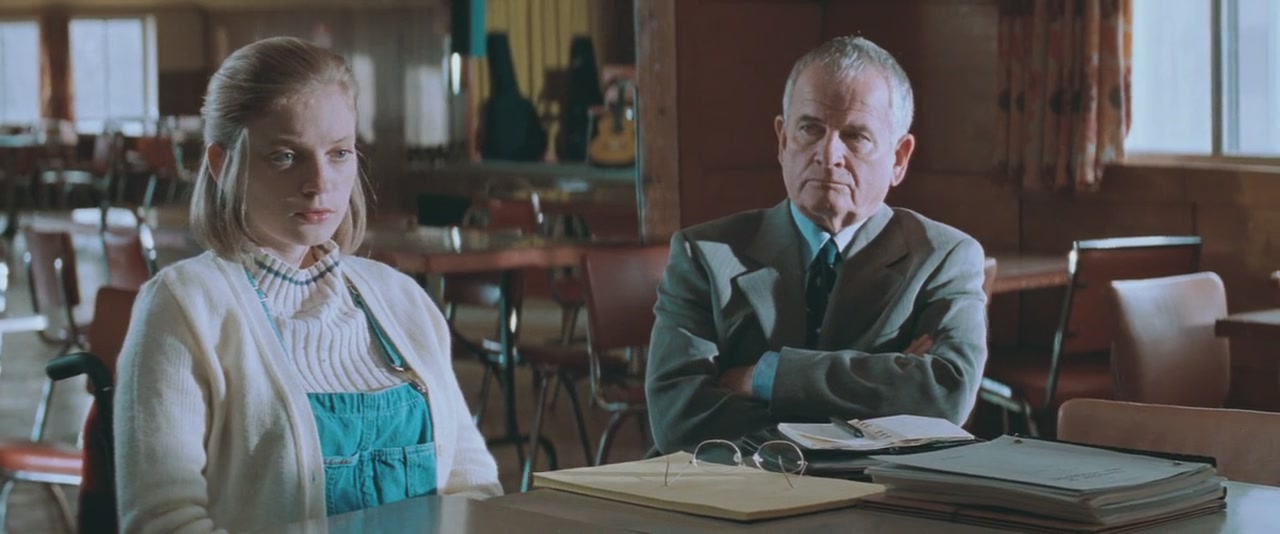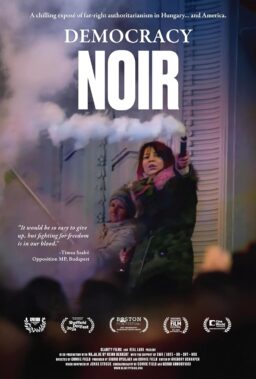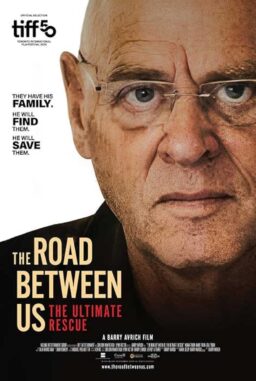There is a particularly haunting monologue in Atom Egoyan’s “The Sweet Hereafter,” one of the saddest films I have ever seen. One of its main characters recollects one eventful summer day he experienced a long time ago, and he vividly describes when he was on the verge of executing an emergency incision on his young baby daughter’s neck after she was bitten by some poisonous bug. While preparing himself for the worst situation, he did everything a good father can do under such a circumstance like that. Fortunately, he did not have to cut his daughter’s throat, but he only found himself losing his daughter after she grew up later. Every word coming out of his mouth is tinged with sad, bitter resignation, and he is still trying to make sense of the most painful part of his life.
He is a middle-aged urban lawyer named Mitchell Stephens (Ian Holm), and his first scene in the movie shows him having a phone conversation with his daughter, who has been drifted away from him for many years as mired in drug addiction. Maybe she simply wants to have a sincere talk with her father this time, but he sticks to his detachment as dreading the worst (“I don’t know who I’m talking to right now”), and that leads to another hurtful moment between them.
Stephens has just come to a small rural town which has been devastated by a recent terrible accident. In one cold, snowy winter morning, a school bus carrying a bunch of local kids crashed into a frozen lake after skidding on an icy road, and 14 children were killed as a consequence. As many of these unfortunate kids’ parents cope with resulting anger and grief, their urge to blame whoever is responsible for the accident grows stronger; Stephens is going to persuade some of these parents to file a class action lawsuit for damages.
While he meets his potential clients one by one, he is presented as someone who cannot be merely defined as a righteous crusader or an opportunistic ambulance chaser. As a guy who virtually lost his child, he deeply sympathizes with his potential clients, and he wholeheartedly believes they must get any sort of financial compensation, but he is also driven by cool professionalism. This complex human side of his is exemplified well by the scene where he succeeds in persuading a grieving couple to hire him. After patiently listening to them, he uses every bit of his sincerity and resolution for convincing them of the moral necessity of the lawsuit. Still, he cannot help but get a little excited as he later goes outside to get a document to be signed by them.
In the meantime, the movie frequently flashes back and forth among its three different time points. While the “present” part shows Stephens’ steady work process step by step, the “past” part presents the town and its people before the accident, and the “future” part revolves around Stephens’ accidental encounter his daughter’s childhood friend on an airplane, which, as clearly shown in the beginning, happens around 2 years after the accident.
This non-linear narrative initially seems artificial, but, like many of Egoyan’s notable works including “Exotica” (1995), the movie, which is based on the novel of the same name by Russell Banks, works fluidly along its own emotional narrative with precise dramatic effects. For instance, observe how Stephens’ estranged relationship with his daughter is juxtaposed with another father and daughter relationship in the film – and how these two contrasting but equally problematic relationships resonate with each other as we get to know more about them later.
Above all, we see more of how sad and devastating the accident was for many people in the town. In case of one of those dead kids, he was apparently loved by his parents as well as many others in the town, and the school bus driver, who luckily survived along with some of the kids on the school bus, laments on his bright potential which is now extinguished forever. With many of its kids gone, the town has virtually lost its hope and future, and the wintry mountainous landscapes surrounding the town further accentuate the stark sense of gloom and isolation around the screen.

That overwhelming sadness hovering over the town and its people is powerfully amplified during the accident scene, which is the most emotionally shattering moment in the film. As the camera calmly watches the bus and its young passengers who have no idea on what is soon going to happen, Mychael Danna’s score, which often feels like medieval funeral march music, prepares us for their imminent tragedy. When the accident eventually happens, the movie only shows its shocking outcome from the distance. But the result is a sheer emotional gut punch which still shakes me hard as much as when I watched the movie for the first time during one hot summer evening of 2007.
Meanwhile, the movie gradually reveals secrets and lies behind its town characters. During one early scene in the film, Stephens talks with a couple running a motel where he stays, and he asks them about anyone decent and respectable enough to be a plaintiff to be represented by him. Whenever the wife suggests someone, the husband scoffs at her as a guy who does not have anything good to say about his neighbors, and it later turns out that this couple is not a very ideal plaintiff either.
While many town people are deluding themselves with the false hope and expectation from not only Stephens’ lawsuit but also other possible lawsuits in the future, there are two people who do not welcome this much, discerning the situation more clearly than others. One is Billy Ansel (Bruce Greenwood), who is the owner of a local gas station/garage and lost his two kids in the accident. As a guy who lost his wife a few years ago, he knows too well that there is no other way for him and others besides accepting pain and grief and then living with them for the rest of life. He has nothing but anger and contempt toward Stephens when they happen to encounter each other.
The other one is Nicole Burnell (Sarah Polley), a serene teenage girl who is one of several kids who survived the accident. She was lucky indeed, but now she cannot walk anymore due to her spinal injury. We sense that she is not so pleased to see that her parents care more about whatever they can get from the lawsuit than her current devastated state. During one flashback scene, she reads Robert Browing’s poem “The Pied Piper of Hamelin” to two kids she is babysitting. There is an unmistakable parallel between her that sad crippled boy in the Piped Piper story, which can also be juxtaposed with Stephens’ attempt to lead his potential clients toward the lawsuit.
Later in the story, she has to give a testimony which will determine the validity of lawsuit, and she does something which is pretty much like a sobering slap to everyone involved with the lawsuit. How did she come to her decision? What exactly was her motivation? Even while accompanied with her calm narration, she does not give us any easy answer, maintaining her phlegmatic façade as usual. Neither does the movie.
Although the film feels distant at times due to Egoyan’s cerebral storytelling approach, its human characters are depicted with understanding and compassion nonetheless, and his cast members bring considerable humanity to their respective roles. As the gray moral center of the movie, Ian Holm’s masterfully understated performance is utterly captivating to say the least, and he is particularly superb during the aforementioned monologue scene. Almost everything in that scene depends on his subtle suggestion of whatever is churning behind his character’s weary face.
The performers surrounding Holm also leave a great impression with their nuanced performances. While notable actors like Sarah Polley, Bruce Greenwood, Maury Chaykin, and Arsinée Khanjian may draw more of your attention first, they and other supporting talent in the film are uniformly excellent while having each own moment. Polley, who has focused more on filmmaking than acting during recent years, even performs two nice songs for the movie.
Although it is often very tough to watch, “The Sweet Hereafter” is superlative in its uncompromising but undeniably compassionate depiction of a bleak human condition. While coldly recognizing the devastating aspects of human loss, it ultimately comes to us as a sensitive and humane lament to muse on. I was especially touched by the gentle tenderness of its closing scenes. Their scars will never be gone, but they can be healed. Can’t they?











